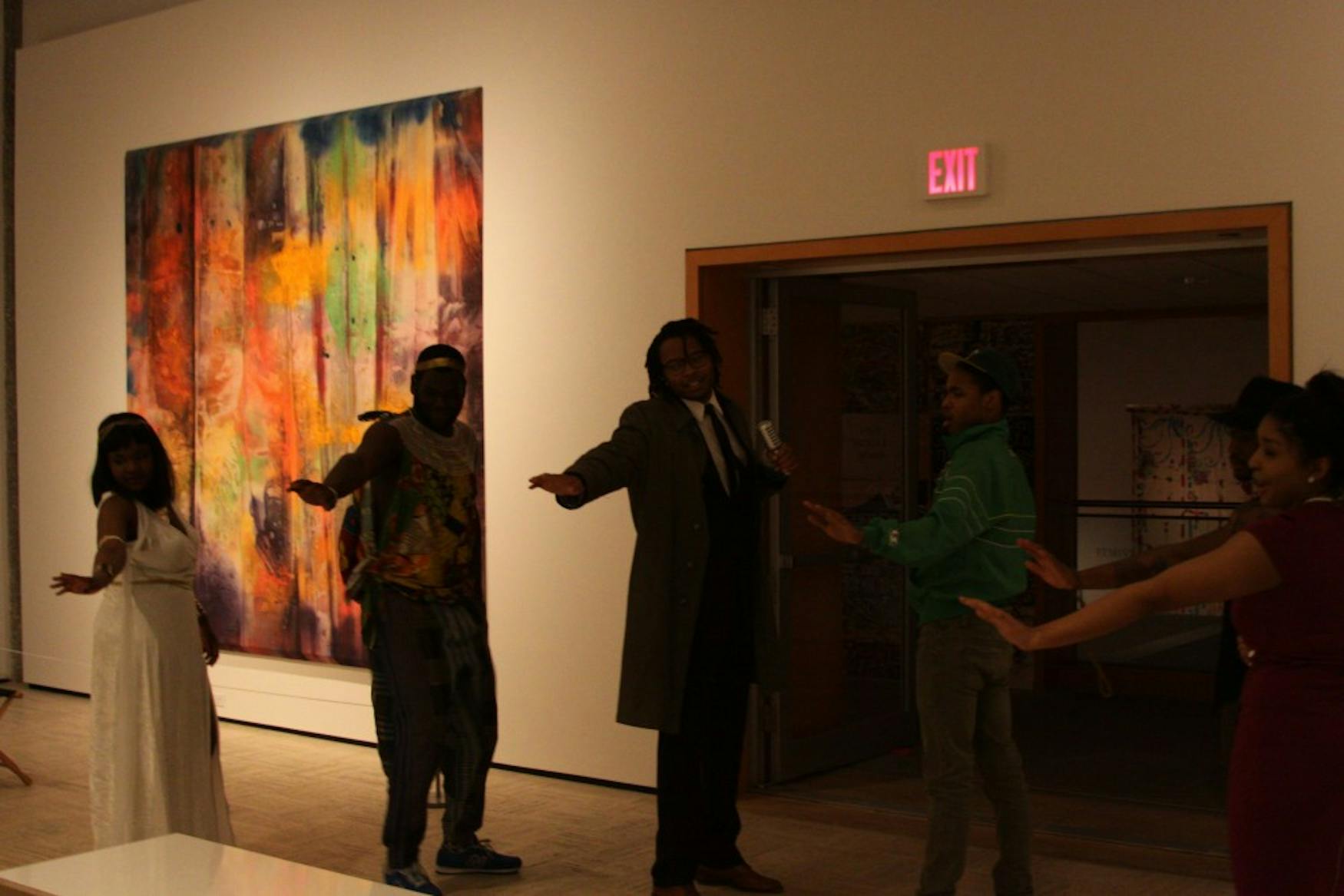Play argues importance of cultural memory
The Death of the Last Black Man in the Whole Entire World establishes the reality of death—it is not just about the physical act of death, but how it affects the entire community.
Walking into the Rose Art Museum for last Friday night’s show, I couldn’t help but realize this would be a performance I would never forget. The play mentions the “death of the last black man alive” quite frequently but focuses more on how the black community responds to death. Even more, it explains how these acts of violence like lynching and electrocution of individuals in the community can be attributed to their essential erasure from history through a series of plots all referring to the death of the last black man—spanning from the stories in pre-colonization to the modern day. The names of the characters are quite interesting—they are named after historic racial stereotypes.
Presented by Brandeis Ensemble Theater and directed by Naya Stevens ’15 in the Rose Art Museum’s Gerald S. and Sandra Fineberg Gallery this weekend, the play was presented in essentially one act that spanned only a little over an hour. The stage was set in the New Acquisitions exhibit for which the Rose acquired abstract paintings and sculptures that had been largely excluded from exhibition due to race and gender-based discrimination.
The show had several elements that presented an image of blackness both from history and in the present-day in a successful attempt to present a black identity.
The set was very intimate, providing for direct interaction with the cast. It was also minimalistic, with everything essential to the display of a kitchen. The costumes were truly reminiscent of the various time periods.
The performers moved on and off stage, switching from intimate scenes to group scenes to reemphasize the death of the last black man in the entire world. The actors solidified the necessity of telling the stories that they were set to tell.
One character, the Black Man with the Watermelon, played by Stacy Finley ’15, poignantly displays the different ways by which the black man sees his inevitable demise—spanning from his death on the slave ship during the Middle Passage to his death from falling down 23 stories. One image that resonates so profoundly in my mind is the image presented while conveying his lynching. It put me in visceral pain to watch his suffering. However, just like the other actors, he can quickly move the tone of the play from rather depressing to comical. This is done very well by the “Black Woman with Fried Drumstick,” played by Keturah Walker ’18.
Throughout the play, the audience is called to pay attention to the crisis at hand when examining black culture. One of the characters, Yes-and-Greens-Black-Eyed-Peas-Cornbread, played by Soloman McBride ’18, calls for the end to the disregard of black history, expressing, “You should write that down and you should hide it under a rock. This is the death of the last black man in the whole entire world.” He calls for future generations toremember the culture, the experiences and suffering. The community must reclaim the past and keep its record. This idea reminds me of the West African proverb, “Until the lion tells his side of the story, the tale of the hunt will always glorify the hunter.” Oral history must be transcribed in order to reclaim its importance. People cannot simply allow others to tell their side of history.
The play also employs a rhythmic element found in repetition and revision to highlight certain phrases. A phrase was repeated rhythmicaly each time it was revised to emphasize its importance. It also shows the nature of the African and Afro-American condition through the stories of characters like Ham (Makalani Mack ’16), Queen-then-Pharaoh-Hatshespsut (Amanda Anderson ’17) and Before Columbus (D’Andre Young ’15).
Before every scene, Stevens added a nursery rhyme by Dean of Student Life Jamele Adams titled “We Can’t Breathe.” The rhyme presents the chant: “Hey there black boy swinging from a tree, instead of whips and chains now they just shoot me.” Stevens said in an interview with the Justice that she “dedicated the whole production to the families of Trayvon Martin, Michael Brown Eric Garner [and] Renisha Mc Bride.”
“The beauty and the ugliness of this play is that it’s timeless. I didn’t have to do much adapting these acts of violence that are always hovering over black peoples lives,” she said.
In the end, I wish that the poetic nature of the play could have been more fully realized. This is to no fault of BET’s cast or crew. Unearthing every element of Suzan-Lori Parks’ poetic play is difficult because it is performed in just over an hour.
If given the chance to attend again, I wouldn’t miss it. The acting and directing were superb and a better location on campus couldn’t have been found. We should all be on the lookout for future BET productions.




Please note All comments are eligible for publication in The Justice.